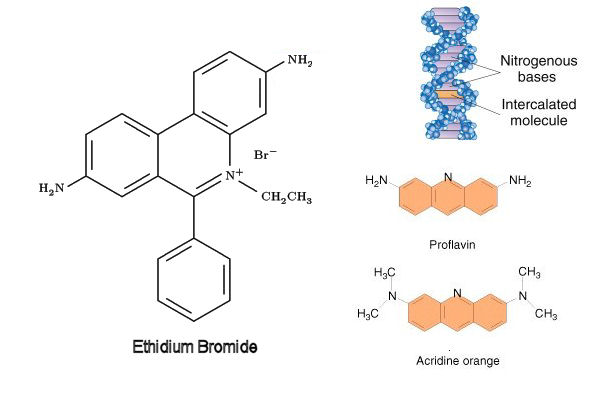
Intercalation of Base Analogs

Intercalation of Base Analogs
Acridine dyes
are histological stains with
a
planar three-ring structure that
resembles
a purine / pyrimidine
base pair. If these base
analogs slip into the DNA molecule between two
adjacent
base pairs,
the intercalated molecule
may
cause DNAPol to "stutter"
and
copy the molecule as an
extra
base pair. This introduces a frameshift mutation.
Ethidium bromide (EtBr ) is widely used in molecular biology as a specific dye for staining DNA: the intercalated molecule fluoresces on exposure to ultraviolet light. EtBr may be incorporated into electrophoretic gels, or the gel may be stained after running. In Bio2250 labs, care should always be taken not to expose oneself to either gels or buffer containing EtBr.